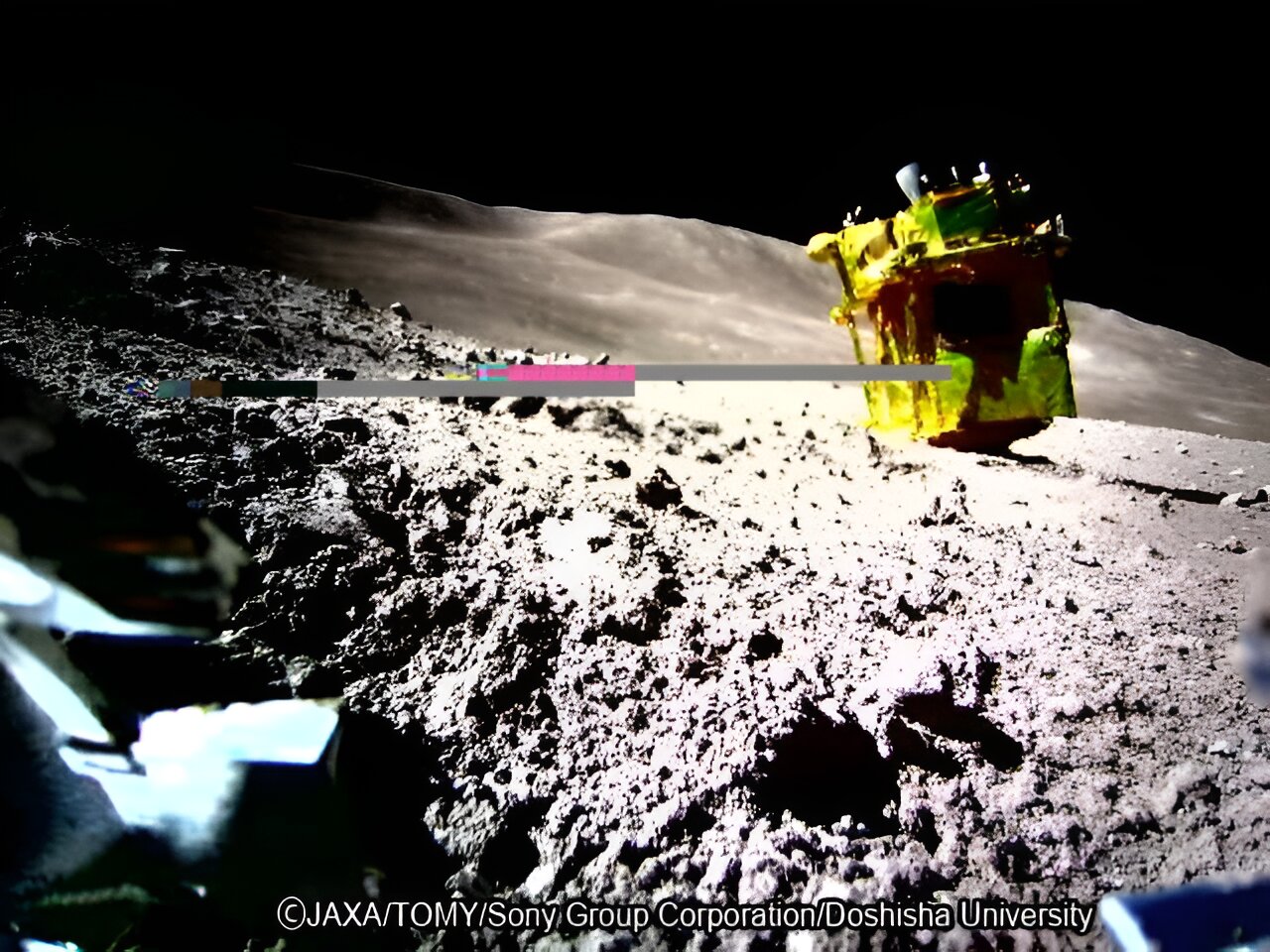The U.S. space agency NASA and Japan’s JAXA recently conducted a laser beam transmission experiment on the Moon. The Lunar Reconnaissance Orbiter transmitted it and the SLIM module, which had a bad landing, successfully received it.

Laser pulse on the Moon
NASA’s LRO (Lunar Reconnaissance Orbiter) transmitted a laser pulse twice to a cookie-sized light reflector aboard the Japanese Aerospace Exploration Agency’s (JAXA) SLIM landing module on the Moon and received a return signal.
When LRO passed 71 km above SLIM (Smart Lander for Investigating Moon) during two consecutive orbits on May 24, 2024, it contacted the lander with a laser altimeter, as it had done eight times before. But on those two attempts, the signal bounced back to the LRO detector.
Important achievement and collaboration between NASA and JAXA
This was a major accomplishment for NASA because the device is in a suboptimal position. Retroreflectors are typically attached to the top of the landing module, giving the LRO a 120-degree range of angles to aim at when sending laser pulses to the approximate location of the retroreflector. However, the SLIM descent vehicle plunged to the surface with its top sideways, which limited the LRO’s range.
To improve the chances of achieving their goal, the LRO team worked with JAXA to determine SLIM’s exact location and orientation. NASA engineers then predicted when the spacecraft’s orbital trajectory would put it at coordinates that would give it the best chance of reaching the Japanese probe’s retroreflector with laser beams.
“LRO’s altimeter wasn’t built for this type of application, so the chances of pinpointing a tiny retroreflector on the moon’s surface are already low,” said Xiaoli Sun, who led the team that built the SLIM reflector at Goddard Space Flight Center in Greenbelt, Maryland, as part of a partnership between NASA and JAXA.
SLIM landed on the surface of the Moon on January 20. The retroreflector clipped to the landing module, called the Laser Retroreflector Array, is one of six that NASA has sent to the Moon aboard private and government landing vehicles, and the second to return a signal back to the LRO altimeter.
Importance of NASA’s retroreflectors
The laser beam was first transmitted from LRO to NASA’s Retroreflector and back on December 12, 2023, when LRO communicated with the Indian Space Research Organization’s (ISRO) Vikram landing vehicle. Since that time, the LRO has exchanged laser pings with Vikram three more times.
NASA’s retroreflector consists of eight quartz cubic prisms mounted in a 5 cm wide domed aluminum frame. Without the need for power and maintenance, the retroreflectors can survive on the lunar surface for decades and thus serve as reliable beacons for future missions.
For example, retroreflectors could show Artemis astronauts the way to the surface in the dark or mark the locations of spacecraft already on the surface to help astronauts and uncrewed spacecraft land near them.
LRO’s altimeter, the only laser instrument orbiting the Moon, was designed to map the Moon’s topography to prepare for missions to the surface, not to point with 1/100th of a degree accuracy at reflectors, which LRO engineers try to do with every ping.
According to phys.org


